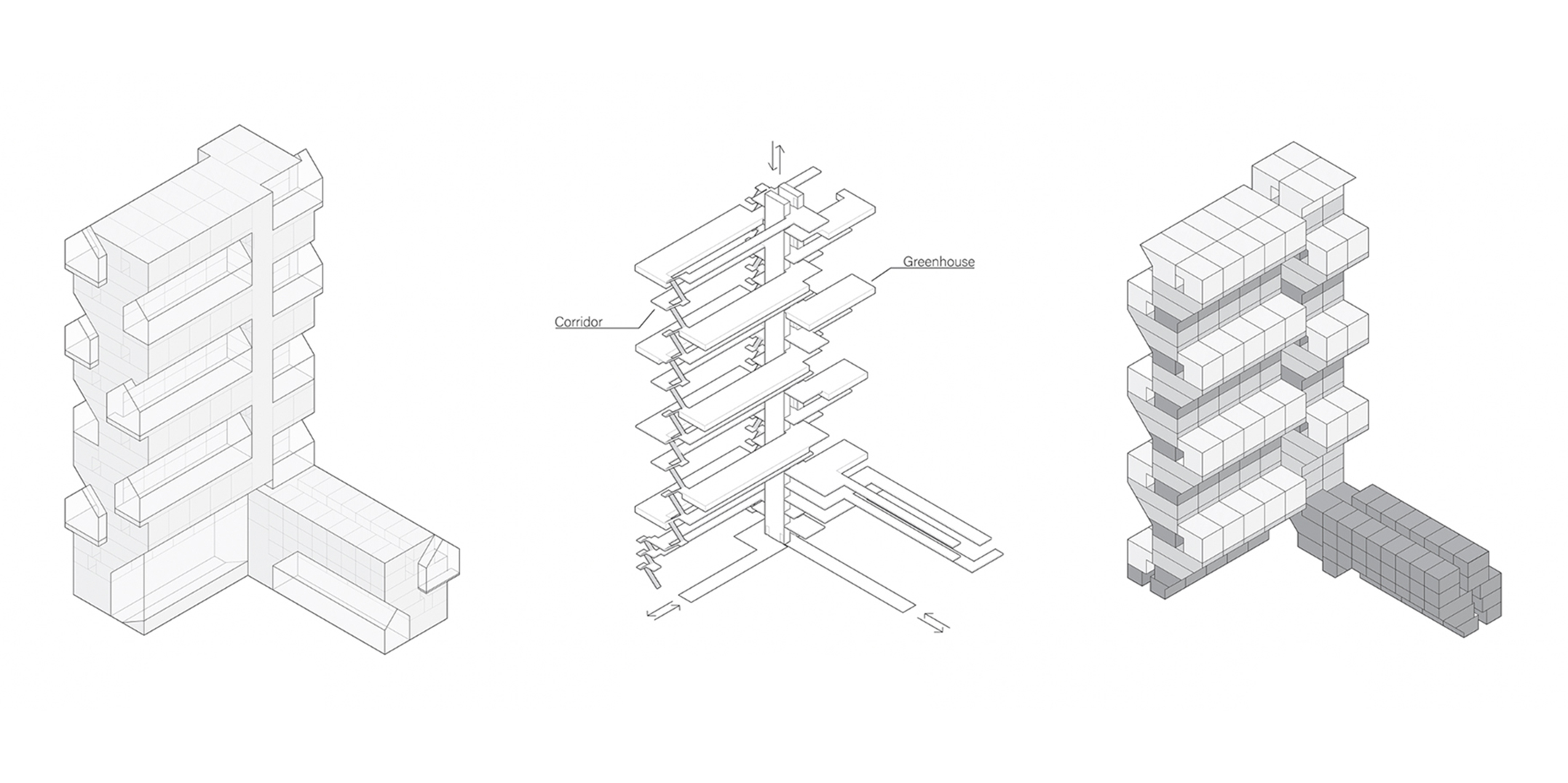
Katharina Vrolijk, "Babylon"
Students in ARC362 were required to design large-scale multigenerational housing structures for a site near the University of Toronto campus. When Katharina began considering the design problem, her thoughts soon turned to the natural world.
"I do a minor in environmental studies alongside my architectural studies," she says. "Something that comes up time and time again on that side of my education is how important garden and outdoor spaces are."
It occurred to her that greenery could do more than just beautify a building. "When I started this project I was living in a condo," she says. "It was really depressing to me how little I knew my neighbours. I was trying to think about how I could design a building that has garden spaces at its very heart — that uses them as a tool to bring residents together, even if they are from different backgrounds."
She decided that her building would use a series of community green spaces to create common ground for two types of residents: students and young families. The two groups would live separately, in dwelling units designed for their particular needs, but the shared gardens would give them a neutral space where they could meet and mingle.
Of course, greenery as a shared amenity in a large apartment building presents certain challenges. Katharina realized that she would somehow need to provide enough light and irrigation for plants to thrive.
After trying a few different configurations, she settled on a design: a mid-rise tower with greenhouses integrated into the sides of the building envelope. The greenhouses, each three storeys tall, are located on alternate sides of the building, giving the entire structure a symmetrical look.
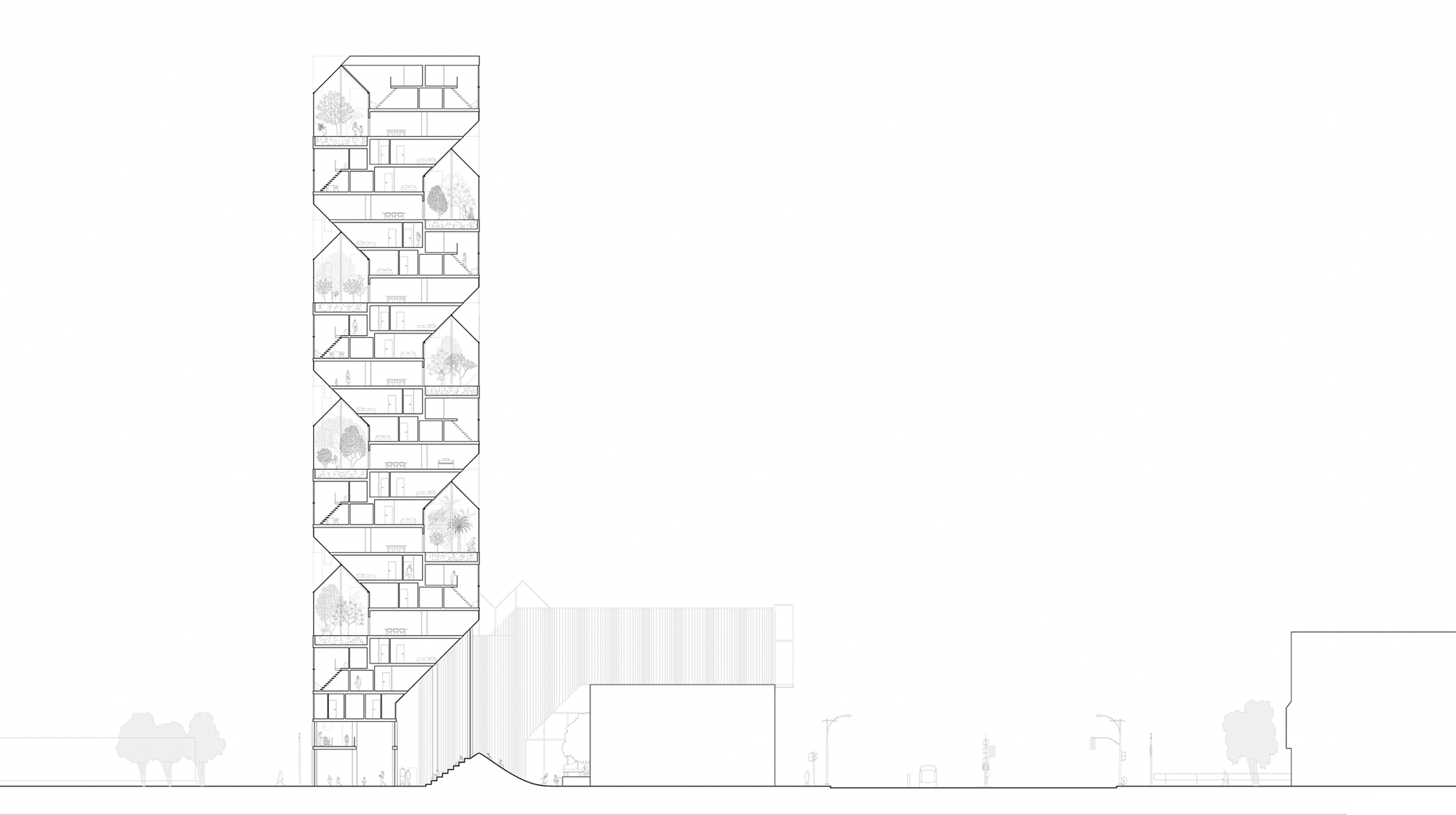
A section drawing of Katharina's building.
Katharina gave careful consideration to precisely how residents would access and use the greenhouses. Rather than make the greenhouses exclusive to particular floors in the building, she decided that they would all be accessible to every resident of the building. There would be no more restriction on access to the greenhouses than there would be to any other common area, like a corridor or lobby.
The building is divided into three-storey tranches, each with a mix of family residences and student residents and a shared greenhouse. The family residences are two-storey, three-bedroom units with front doors that are accessed from within the greenhouses, meaning residents can use the greenhouse space as a kind of front yard. These units also have windows with greenhouse views.
Within each three-storey tranche, students live in smaller one-bedroom units located below the family residences. The front doors of the student residences are accessed by ordinary, non-greenhouse corridors — but students are still able to visit the greenhouse areas by climbing stairs to the nearest greenhouse floor.
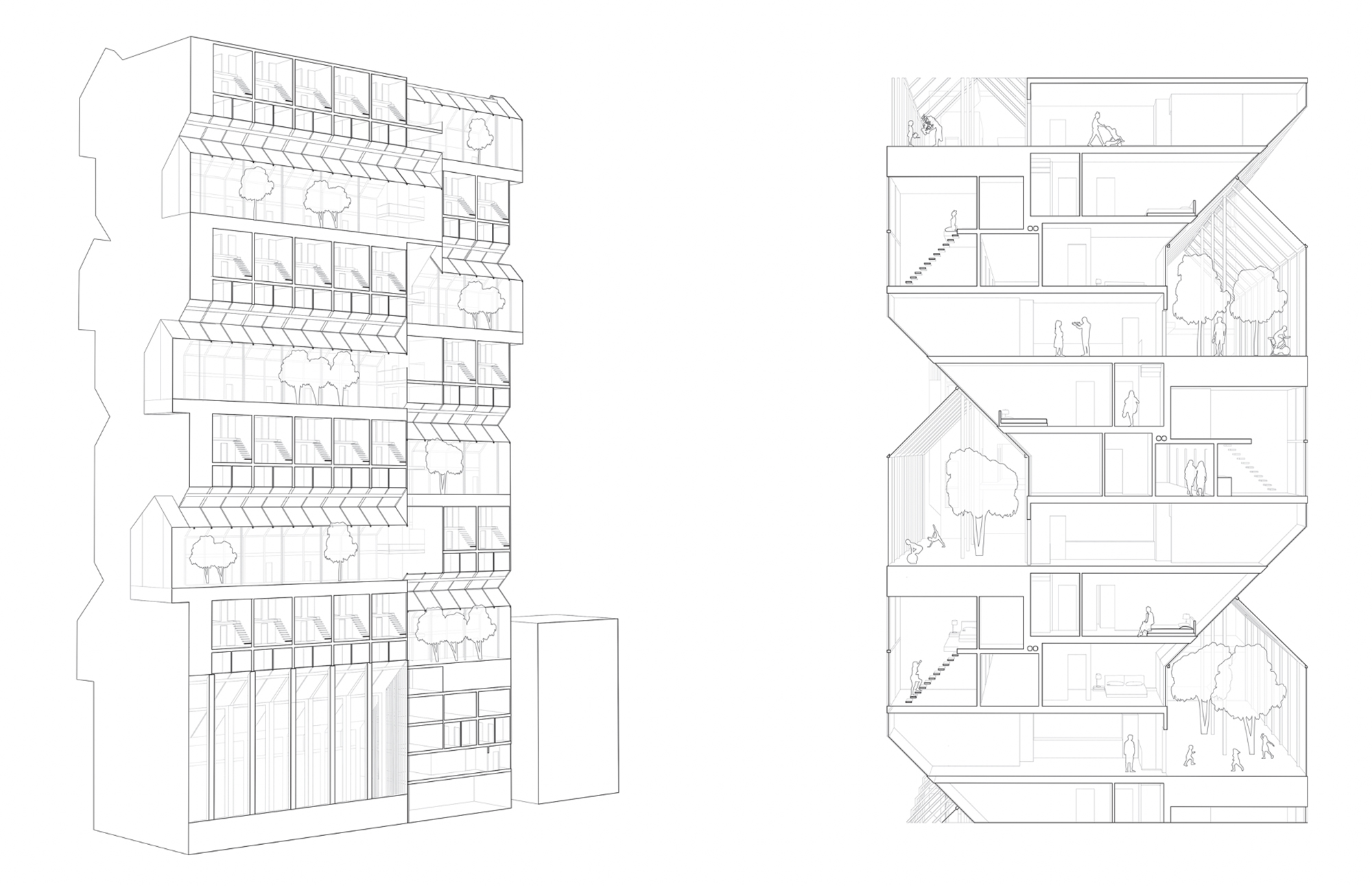
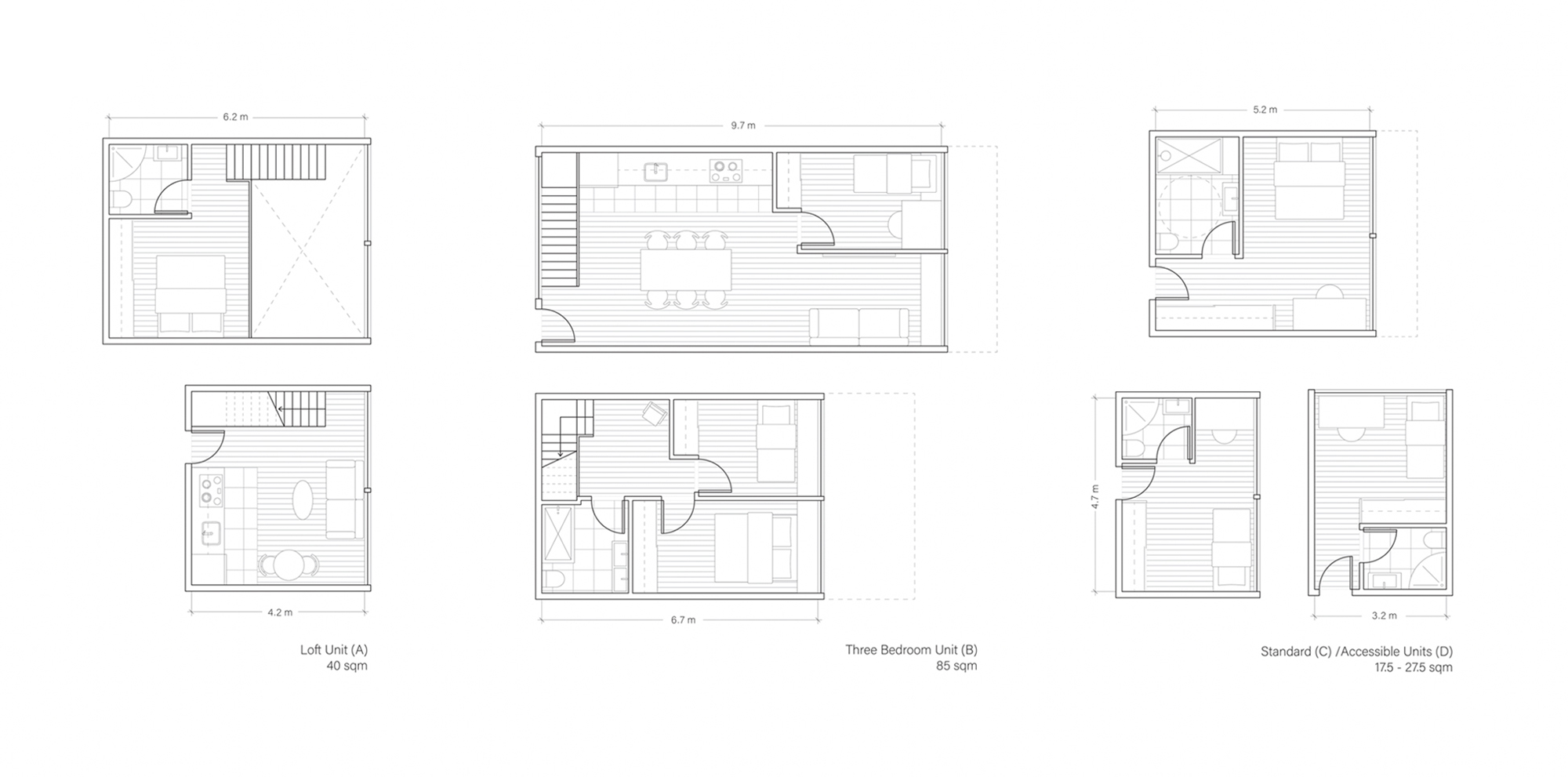
Top: Drawings showing the relationships between residential units and greenhouses. Bottom: Unit floor plans.
"My idea was to have a variety of different programs offered in the greenhouses," Katharina says. "There might be some exercise bikes in one greenhouse. Another floor might have a small berry patch. Another floor might have tables."
As part of ARC362's design prompt, Katharina was required to incorporate a neighbouring heritage building into her design. She decided to make the older structure into a laundromat for residents, with a café in the front to act as a community gathering space.
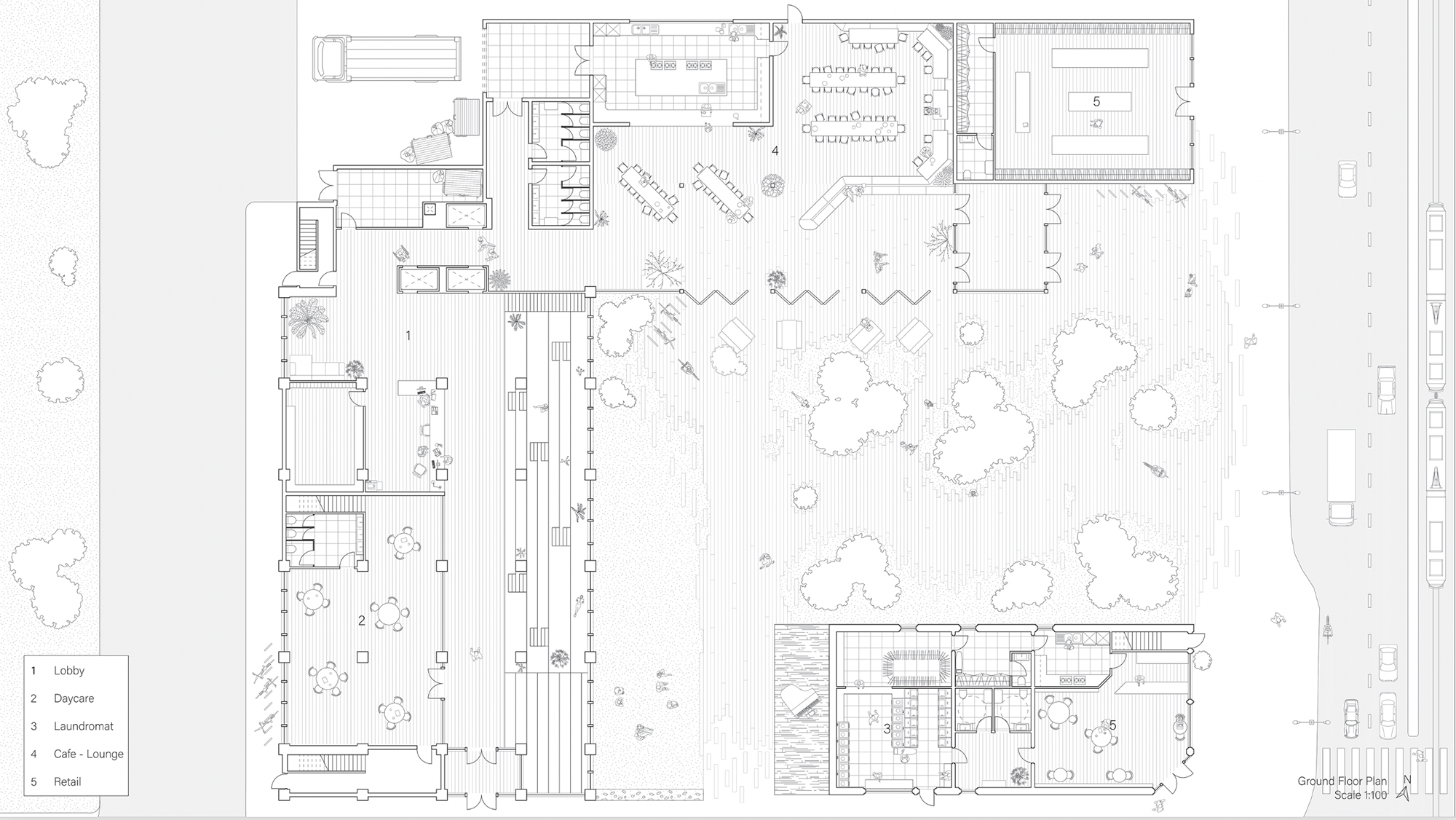
A plan of the ground floor and surrounding landscape.
She extended the community amenities to the ground floor of the main building, where she carved out space for a daycare, a second café space, and an outdoor garden and performance area.
Instructor: Victor Perez-Amado

